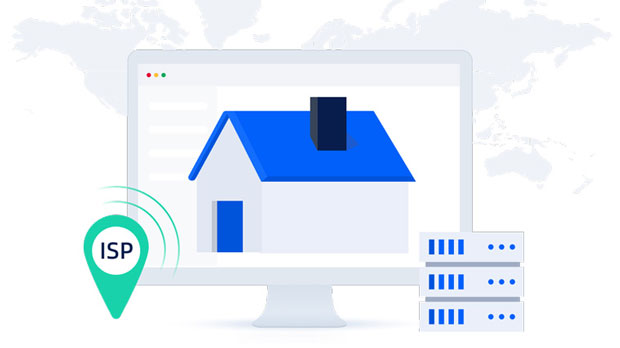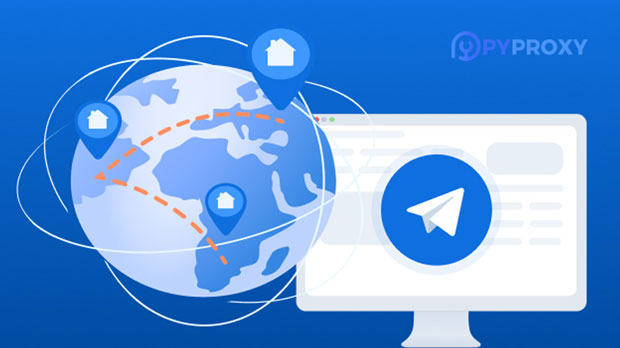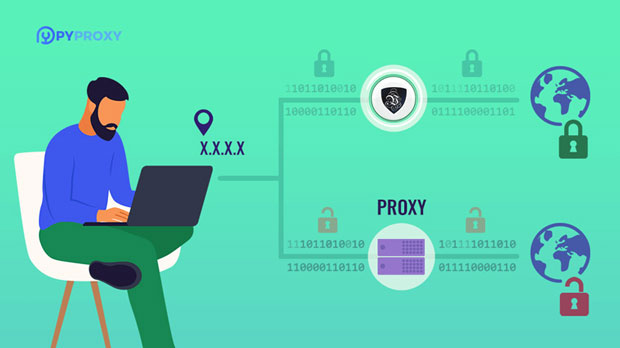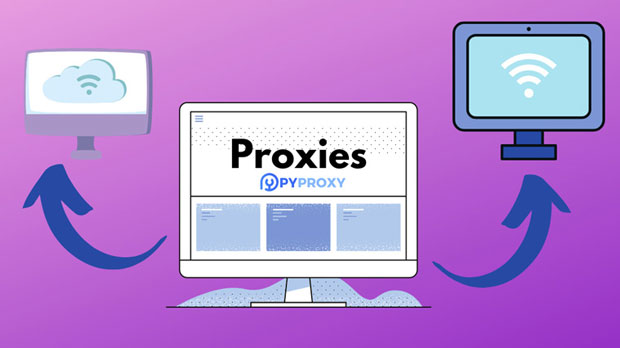In the world of online privacy and security, IP anonymity plays a vital role. Many individuals and businesses seek reliable tools to hide their true IP addresses to maintain privacy, avoid geographical restrictions, or bypass censorship. Reverse proxies, PYPROXY, and Proxyscrape are three common solutions used to achieve IP anonymity, but they differ in several ways, including functionality, ease of use, and reliability. This article compares these three tools, focusing on their effectiveness in achieving IP anonymity, and provides a deeper understanding of their pros and cons to help users choose the best solution for their needs. Understanding IP Anonymity and Its ImportanceIP anonymity refers to the process of masking a user’s real IP address when accessing the internet. This is often done to prevent tracking, protect personal data, bypass geographic restrictions, and ensure privacy while browsing. Various methods can be used to achieve IP anonymity, with proxies being one of the most common solutions. By routing traffic through an intermediary server, proxies can hide the user’s original IP address and replace it with one from the proxy server.The importance of IP anonymity is growing as concerns over data privacy and online tracking continue to increase. Whether for personal use or business purposes, ensuring that sensitive online activities remain private is essential. In this context, tools like reverse proxies, PyProxy, and Proxyscrape are frequently used to maintain anonymity. However, understanding how they operate and their differences in terms of security and functionality is key to selecting the best option for specific needs.What is a Reverse Proxy?A reverse proxy is a server that sits between client devices and the servers they are trying to access. Unlike a traditional proxy, which forwards requests from users to the destination server, a reverse proxy takes requests from the client and forwards them to the appropriate backend server, all while hiding the identity of the client. This type of proxy is often used in scenarios where a website or service wants to provide anonymity for users by masking their IP addresses.One of the main advantages of using a reverse proxy is that it can provide high levels of anonymity. Since the client’s IP address is hidden behind the proxy server, it is difficult for external observers to trace the activity back to the user. However, the level of anonymity provided depends on the configuration of the reverse proxy. Some reverse proxies may only obscure the IP address to a limited degree, while others can offer robust privacy protection by hiding other identifying information.What is PyProxy?PyProxy is an open-source proxy solution built with Python that allows users to create and manage proxy servers. It is commonly used by developers and privacy-conscious individuals who want to create their own proxy network. PyProxy supports various types of proxies, including HTTP, HTTPS, and SOCKS proxies, and can be customized to meet specific privacy requirements.When it comes to IP anonymity, PyProxy can be an effective solution, especially for those who are comfortable with configuring and managing their proxy network. One of the key features of PyProxy is its ability to route traffic through multiple proxy servers, which can further enhance anonymity. This makes it a versatile tool for users who need to ensure their IP addresses remain hidden while accessing the web.However, the level of anonymity with PyProxy largely depends on how well the proxy network is set up. If the network is not configured correctly, there may be leaks that expose the user’s true IP address. Additionally, PyProxy requires a certain level of technical expertise, which may make it less accessible for casual users.What is Proxyscrape?Proxyscrape is a proxy scraping and proxy list service that provides access to a large pool of proxies. Unlike PyProxy, which allows users to set up and manage their own proxy network, Proxyscrape focuses on providing a curated list of proxies that users can use to hide their IP addresses. The proxies offered by Proxyscrape are sourced from various locations worldwide, allowing users to choose the most appropriate proxy for their needs.In terms of IP anonymity, Proxyscrape can be a convenient solution for users who need access to a variety of proxies without the need to set up their own network. By using proxies from Proxyscrape, users can bypass geo-restrictions, avoid tracking, and protect their identities online. However, the effectiveness of Proxyscrape’s proxies in maintaining anonymity depends on the quality and reliability of the proxies on offer.One potential drawback of using Proxyscrape is that the proxies provided may not always be fully secure. Some proxies may be exposed to vulnerabilities, and there is always the risk that they could be used for malicious purposes. Additionally, since Proxyscrape relies on third-party proxies, users may not have full control over the proxy network, which could impact the level of anonymity provided.Comparison of Reverse Proxy, PyProxy, and ProxyscrapeWhen comparing these three solutions—reverse proxy, PyProxy, and Proxyscrape—several key differences in their effectiveness in providing IP anonymity emerge. Here’s a closer look at each:1. Configuration and SetupA reverse proxy generally requires more technical knowledge to configure and deploy effectively. Setting up a reverse proxy server involves configuring both the server and the backend systems to ensure proper traffic routing and IP masking. For non-technical users, this might pose a challenge, but for those who are familiar with server management, it can provide a high level of control over anonymity.On the other hand, PyProxy also demands technical expertise. Although it allows for greater customization, setting up PyProxy requires users to understand Python programming and proxy management. For those who prefer a DIY approach and need full control over their proxy network, PyProxy offers flexibility.Proxyscrape, however, is more user-friendly, as it does not require any setup or technical knowledge. Users simply select proxies from the list, making it an easy option for those who want a quick solution for hiding their IP addresses. However, the tradeoff is less control over the proxies being used, as users rely on Proxyscrape’s curated list.2. Anonymity and PrivacyIn terms of IP anonymity, reverse proxies typically provide the best security, as they can be configured to hide the user’s IP address and other identifying information. However, the effectiveness depends on the configuration and the level of encryption used.PyProxy can offer strong anonymity, especially when configured with multiple proxy layers. The use of rotating proxies and encryption further enhances privacy. However, improper setup can lead to potential leaks, reducing its effectiveness.Proxyscrape provides a good level of anonymity, especially for casual users who need access to multiple proxies. However, since the proxies are sourced from third parties, there is always a risk that some proxies may be unreliable or compromised.3. Speed and ReliabilityReverse proxies, when configured properly, can offer reliable and fast connections. However, if the proxy server is not maintained or is overloaded, speed can degrade. PyProxy’s performance depends largely on the quality of the proxy network created by the user, but it can provide good speeds if managed well.Proxyscrape’s speed and reliability depend on the proxies available in the list. Free proxies may offer slower speeds or be less reliable, while premium proxies tend to be faster and more stable.In conclusion, each of these tools offers different levels of IP anonymity and privacy protection. Reverse proxies provide robust anonymity when configured properly, but they require technical expertise. PyProxy is highly customizable and offers good privacy, but also demands a certain level of technical knowledge. Proxyscrape is the most accessible option, offering a curated proxy list, but it may not provide the same level of control or security as the other two solutions. Ultimately, the choice between these tools depends on the user’s technical ability, privacy needs, and willingness to manage the proxy network.
Mar 25, 2025
![arrow]()




























































